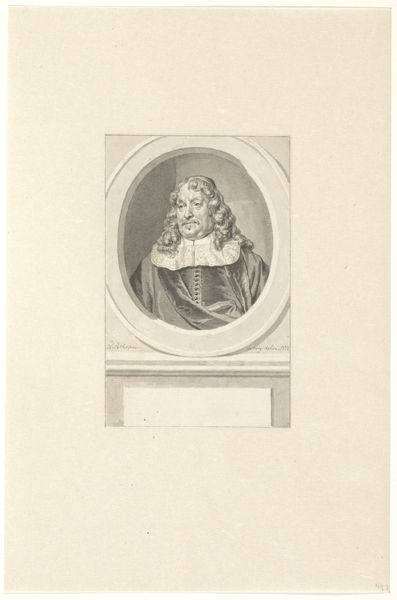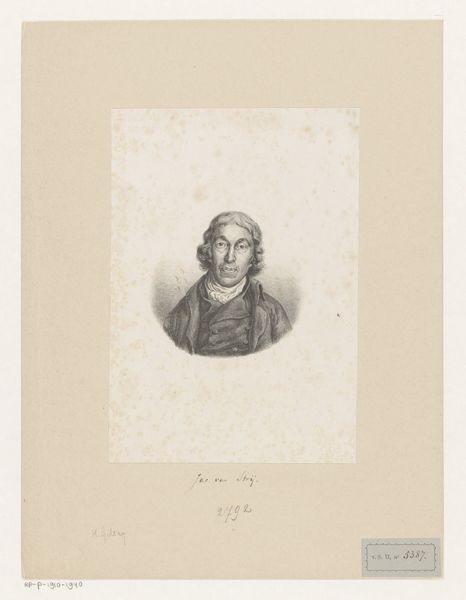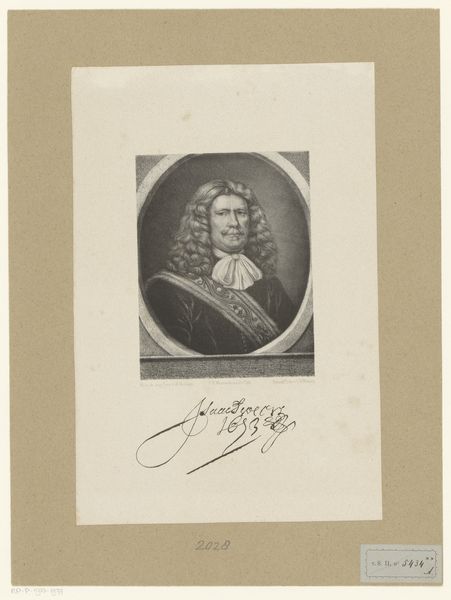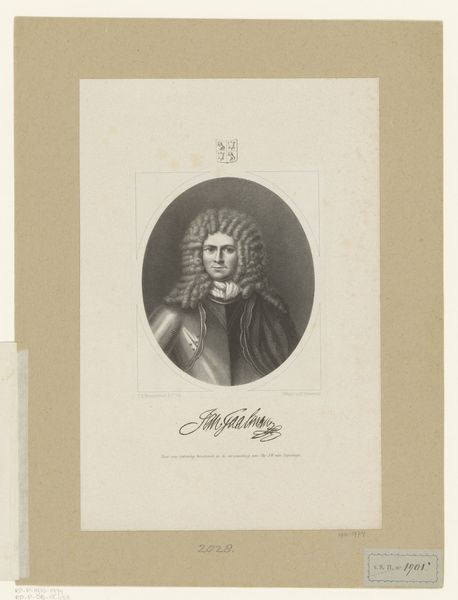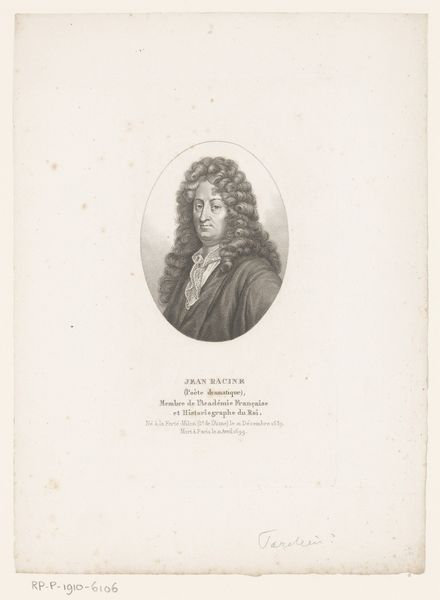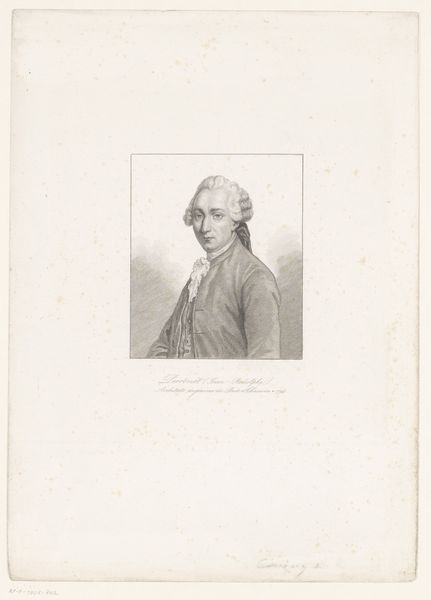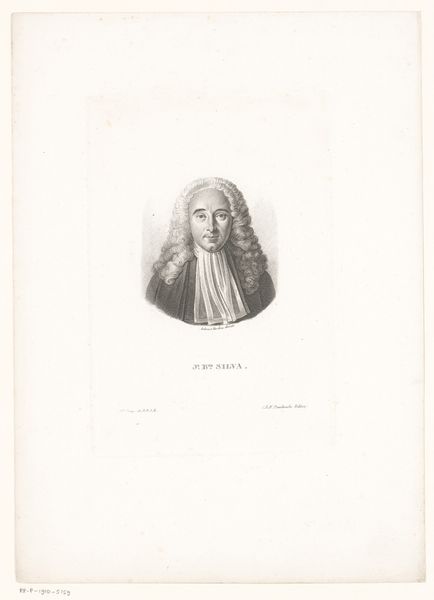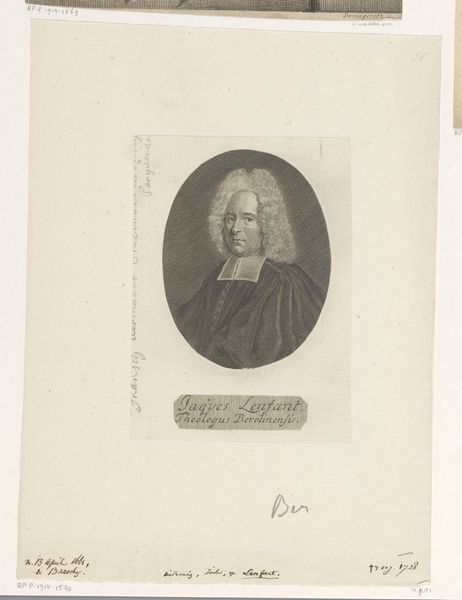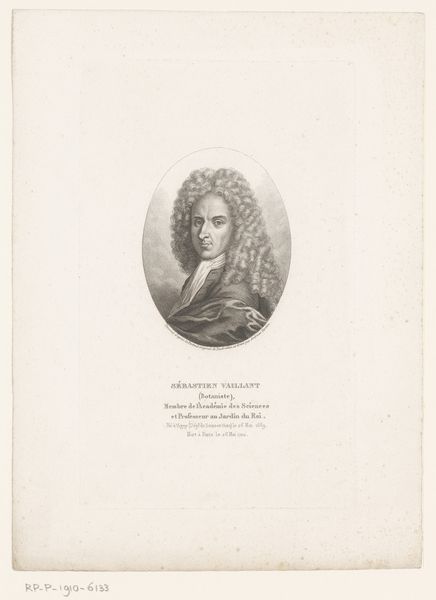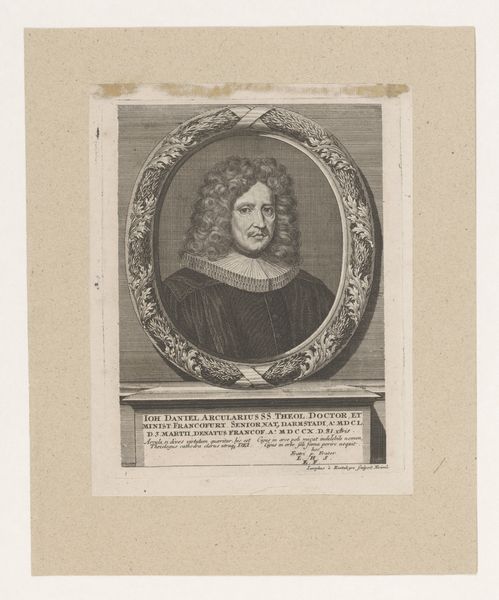
#
portrait
# print
#
historical photography
#
history-painting
#
academic-art
Dimensions: height 270 mm, width 176 mm, height 336 mm, width 256 mm
Copyright: Rijks Museum: Open Domain
Editor: Here we have Frederik Hendrik Weissenbruch’s "Portret van Willem Bastiaansz Schepers," dating from around 1858 to 1862. It’s a print, and what strikes me immediately is the contrast between the ornate wig and armor and the somber expression. What do you see in this piece, considering its historical context? Curator: It’s more than just a portrait; it's a statement about power, identity, and historical memory. Consider the subject, Willem Bastiaansz Schepers. This portrait, rendered much later than Schepers' own lifetime, revives a figure from the Dutch Golden Age, a period often romanticized for its mercantile success and colonial endeavors. How might this idealized representation reinforce specific narratives about Dutch identity and its relationship to its colonial past? Editor: So, it’s less about accurately depicting the individual and more about… perpetuating a certain image? Curator: Precisely. The armor, the wig, even the cross—they're all symbols that evoke a specific kind of authority. We have to ask ourselves, whose authority is being validated here, and for what purpose? Does the artist's choice to portray him in this manner celebrate or perhaps subtly critique this figure in light of the legacies of colonialism and social inequality? Editor: It’s like the artist is engaging in a dialogue with history itself. Curator: Absolutely. We are invited to examine the ways in which history is constructed and how these constructions can both reflect and shape contemporary ideologies and power structures. It makes you wonder, who gets remembered and how? Editor: I hadn’t thought about it that way. It’s given me a lot to consider regarding the relationship between art, power, and historical narrative. Curator: And that's the power of engaging with art critically! It opens avenues to question the stories we tell ourselves about the past and, more importantly, about who we are today.
Comments
No comments
Be the first to comment and join the conversation on the ultimate creative platform.
